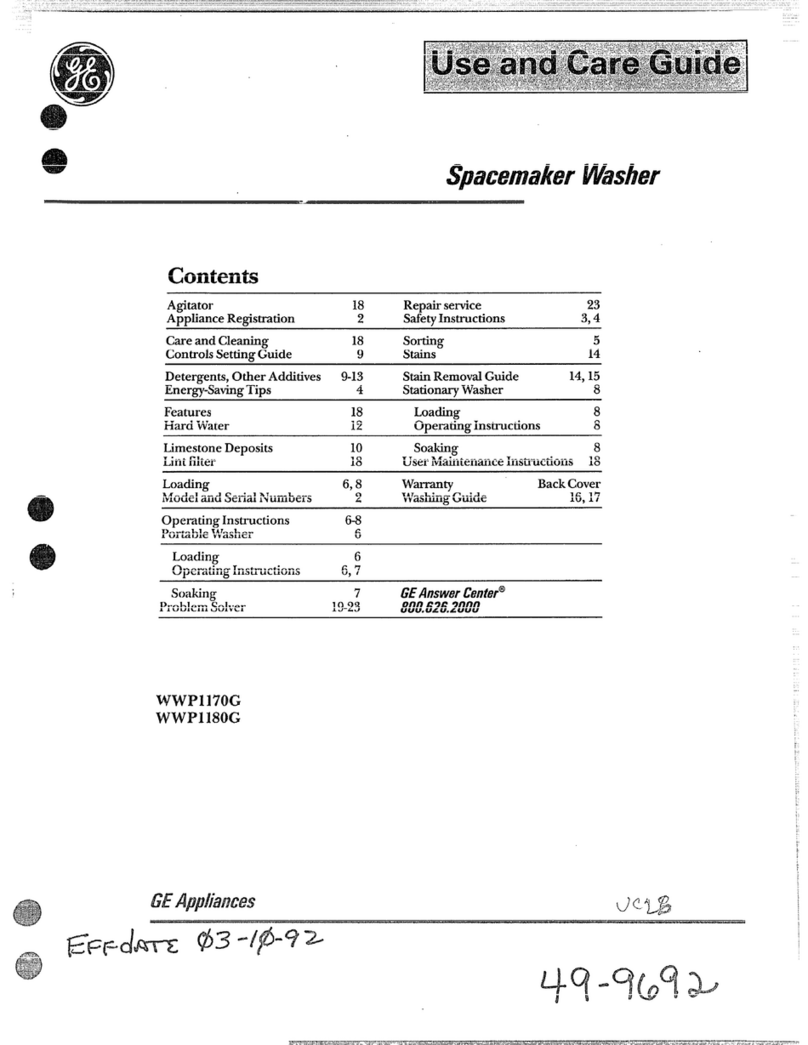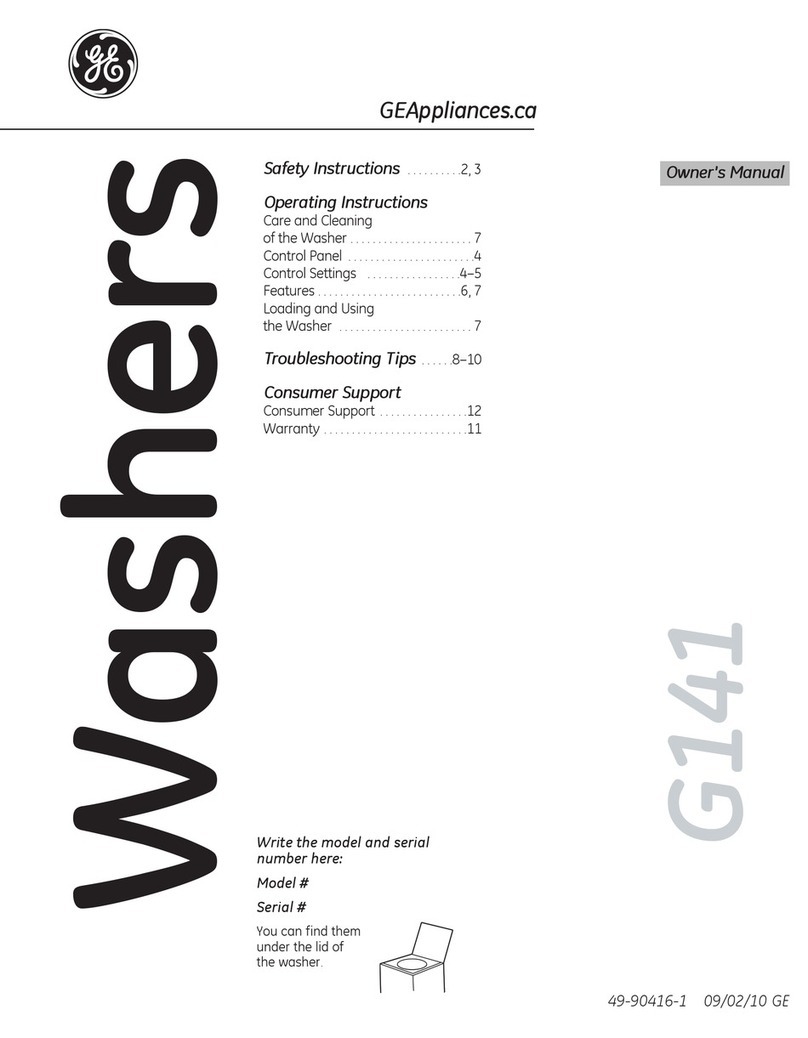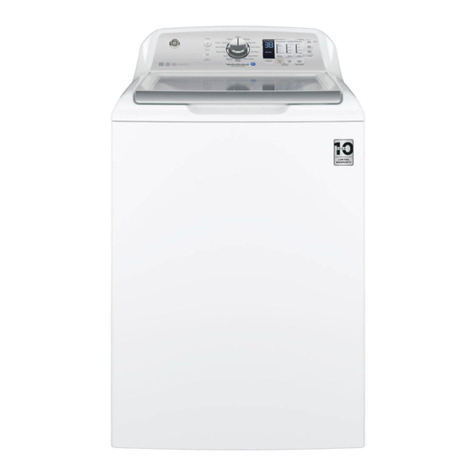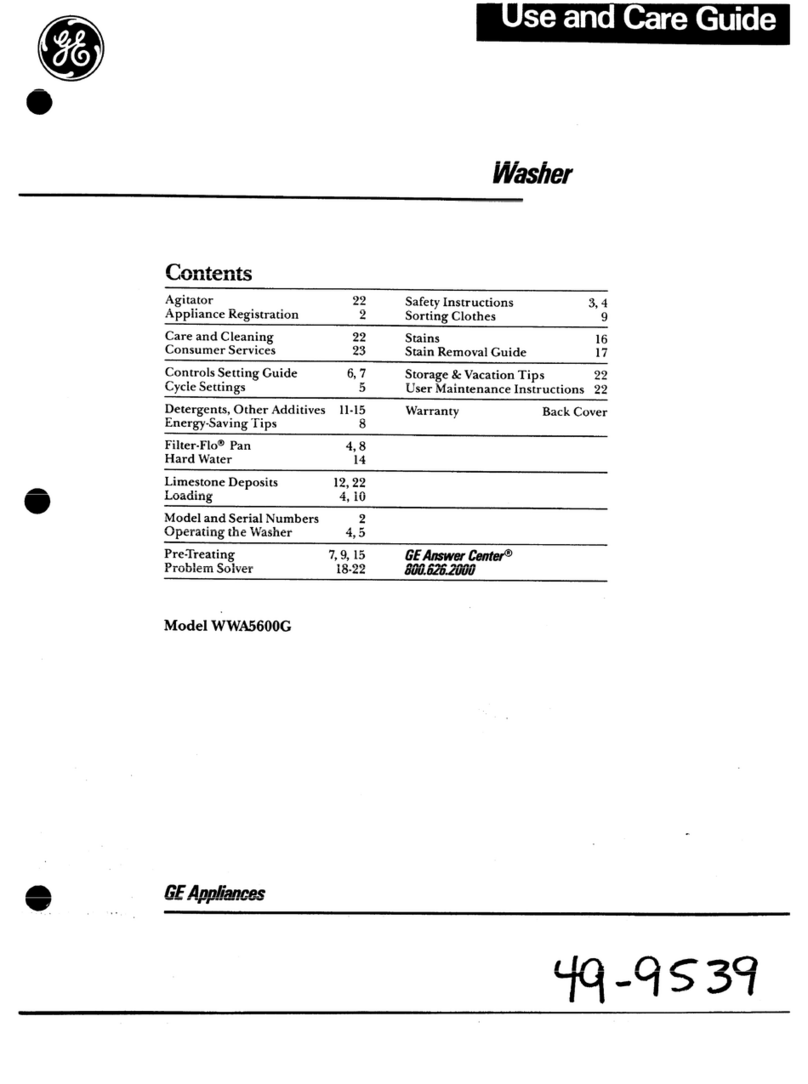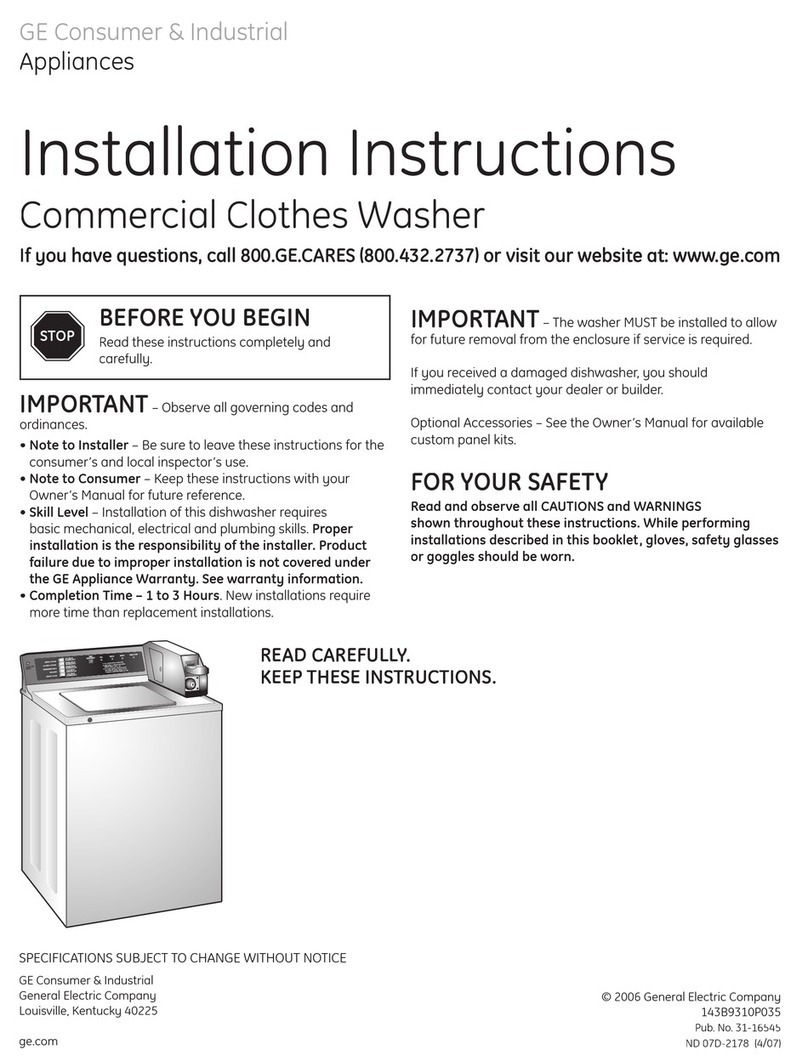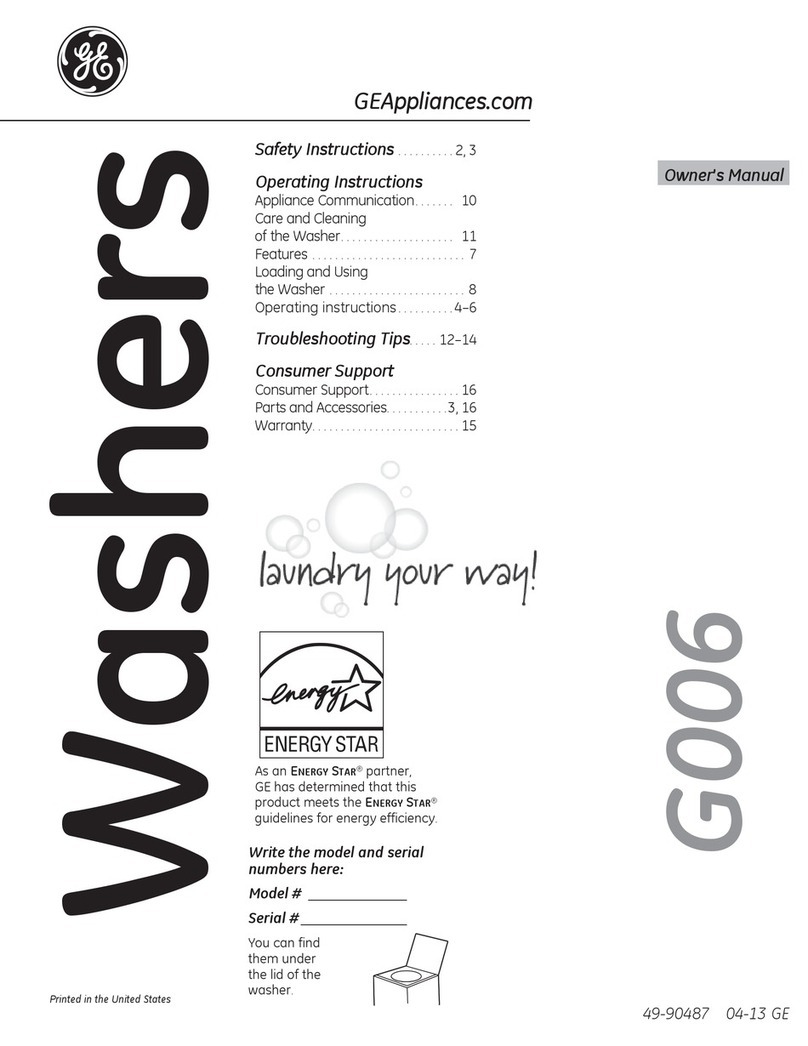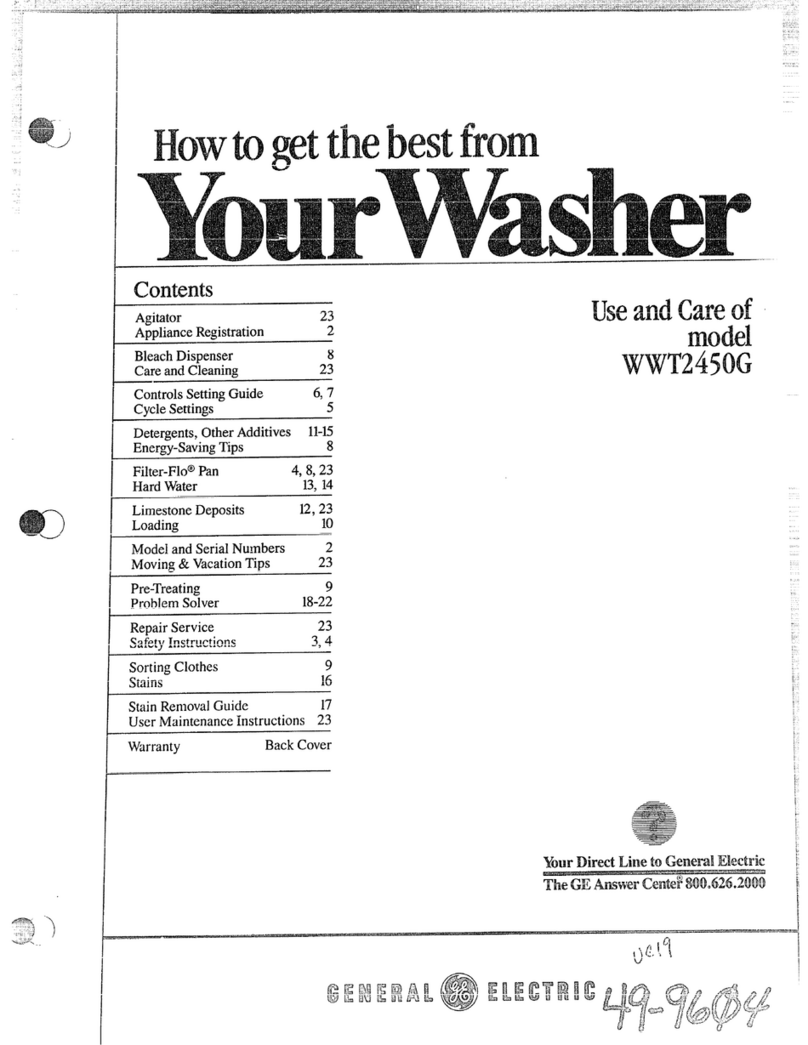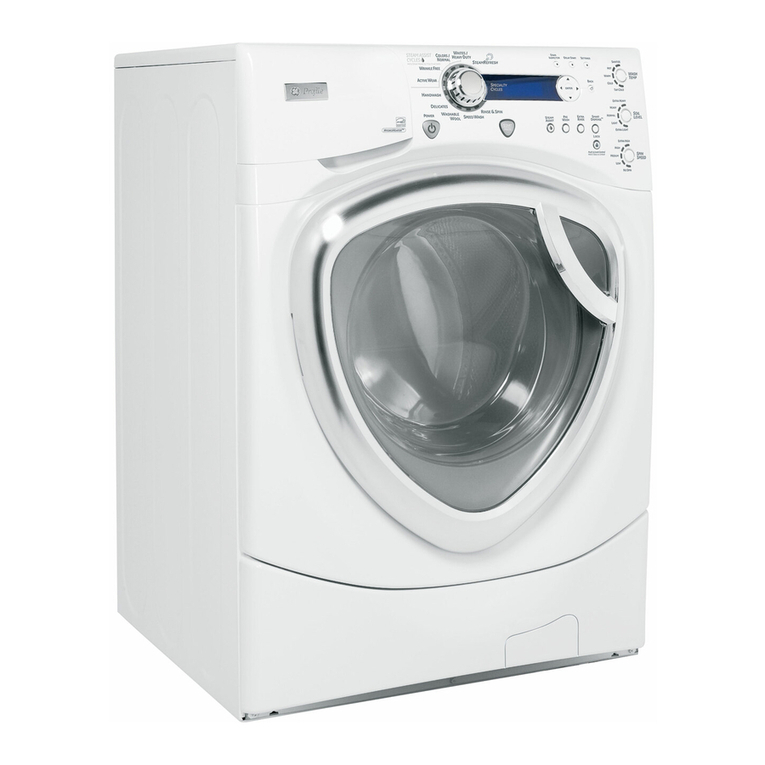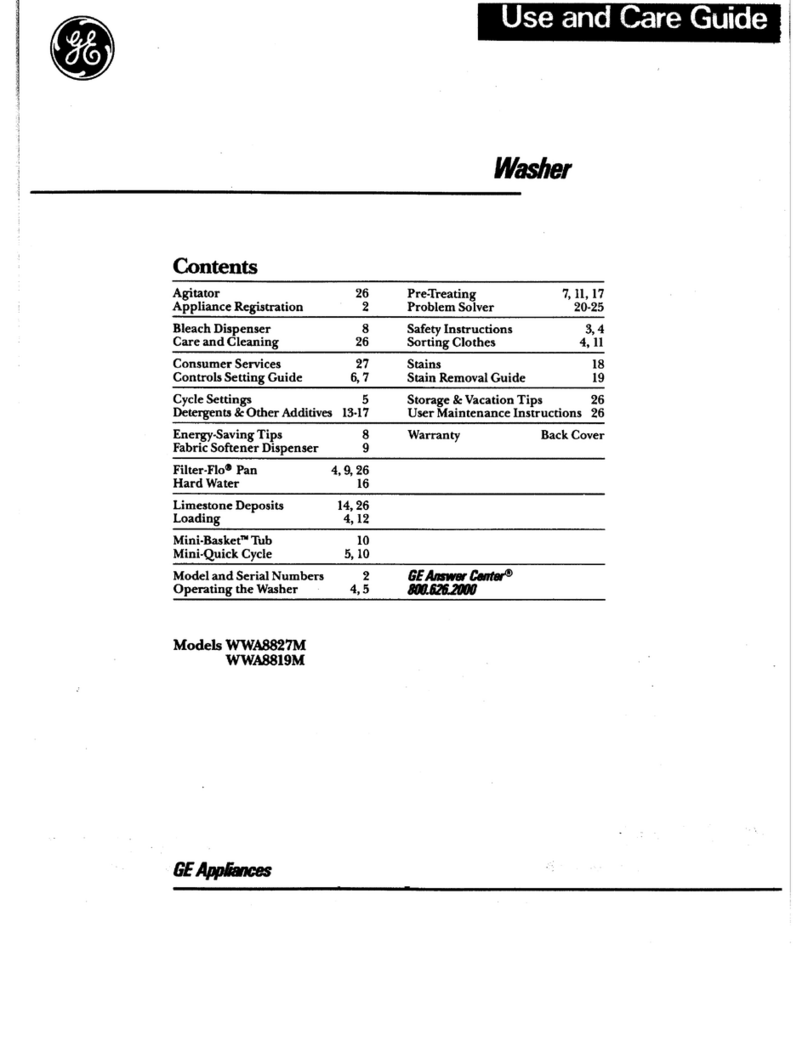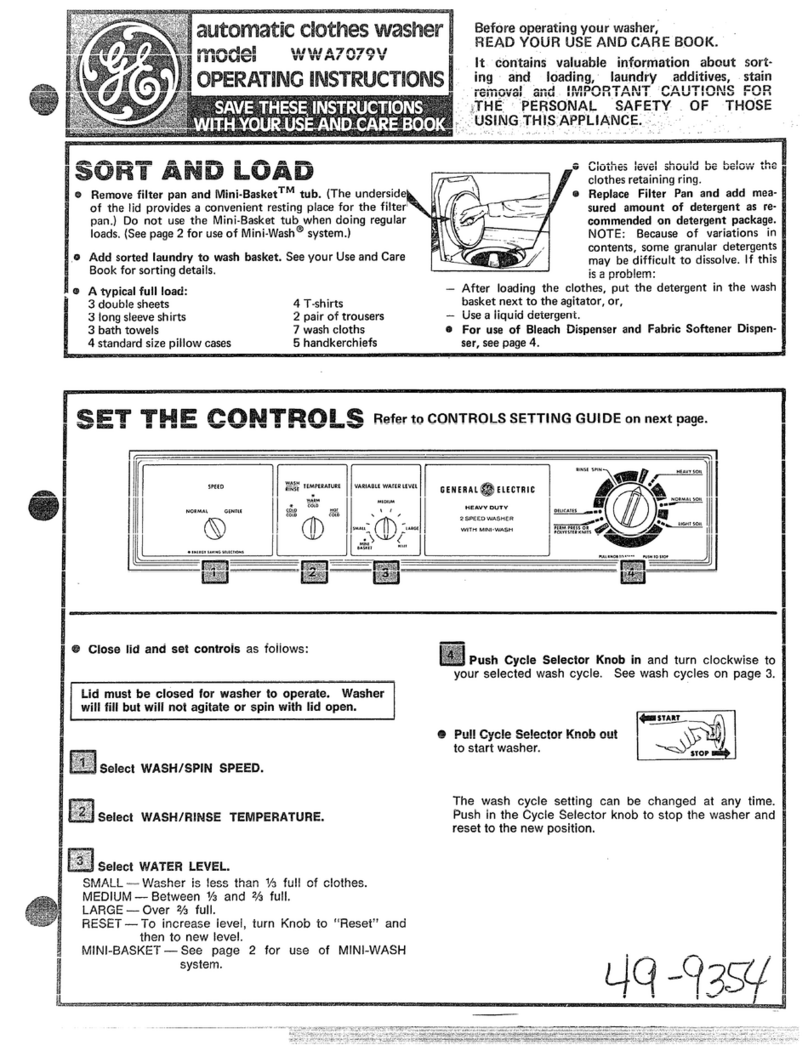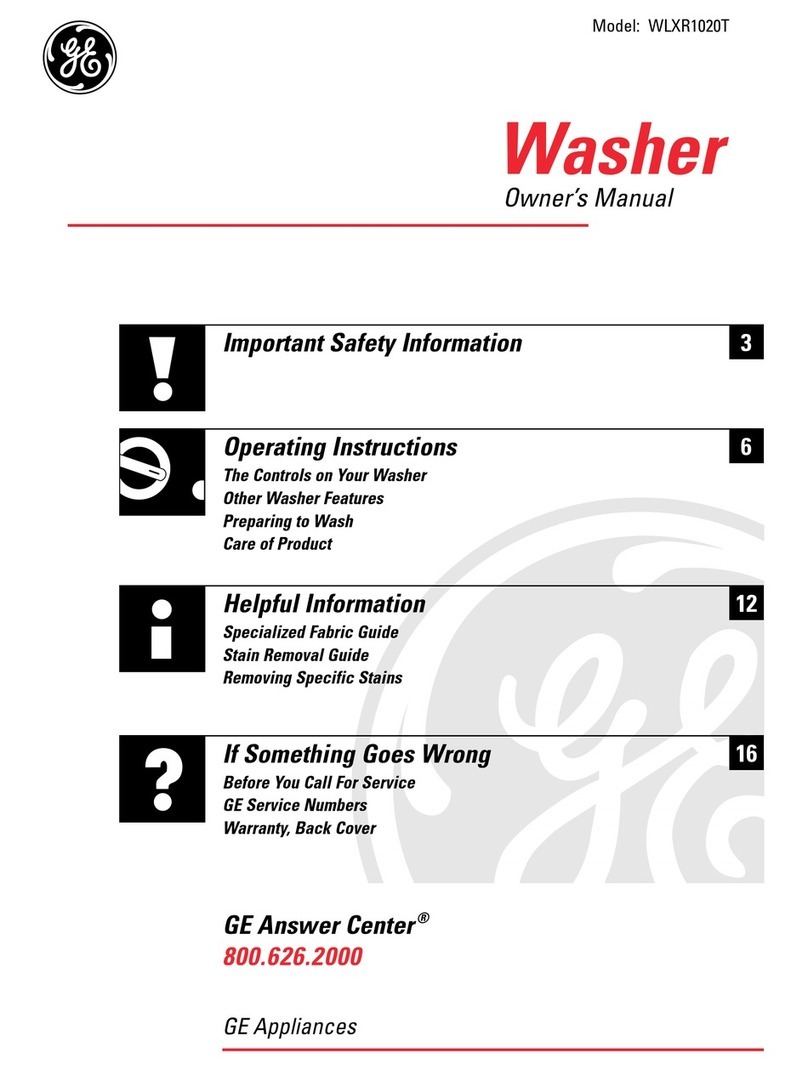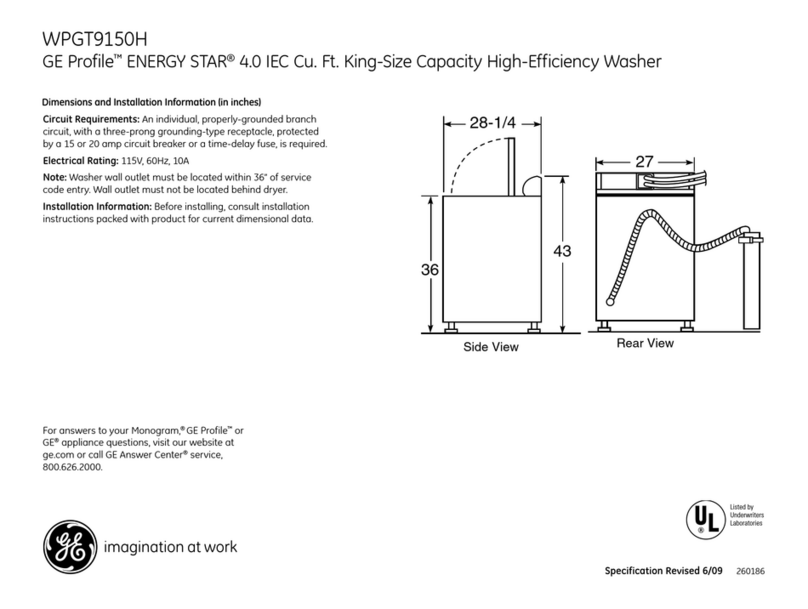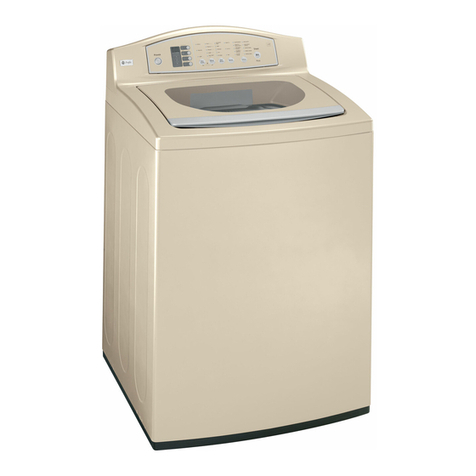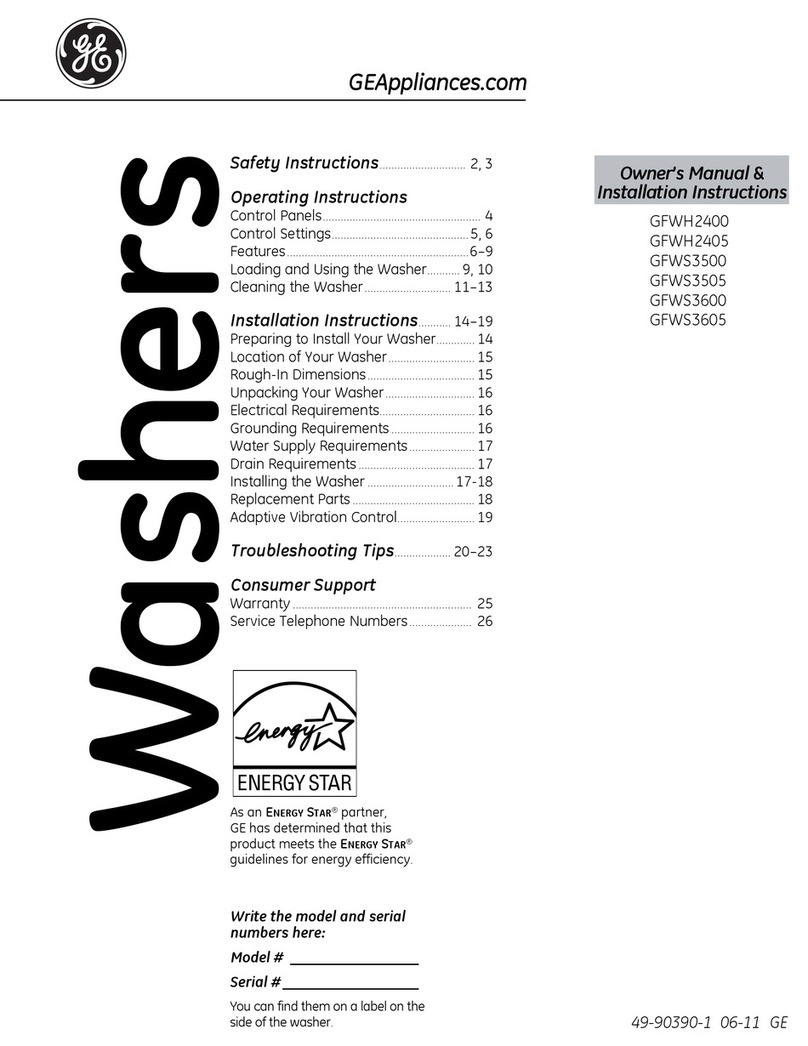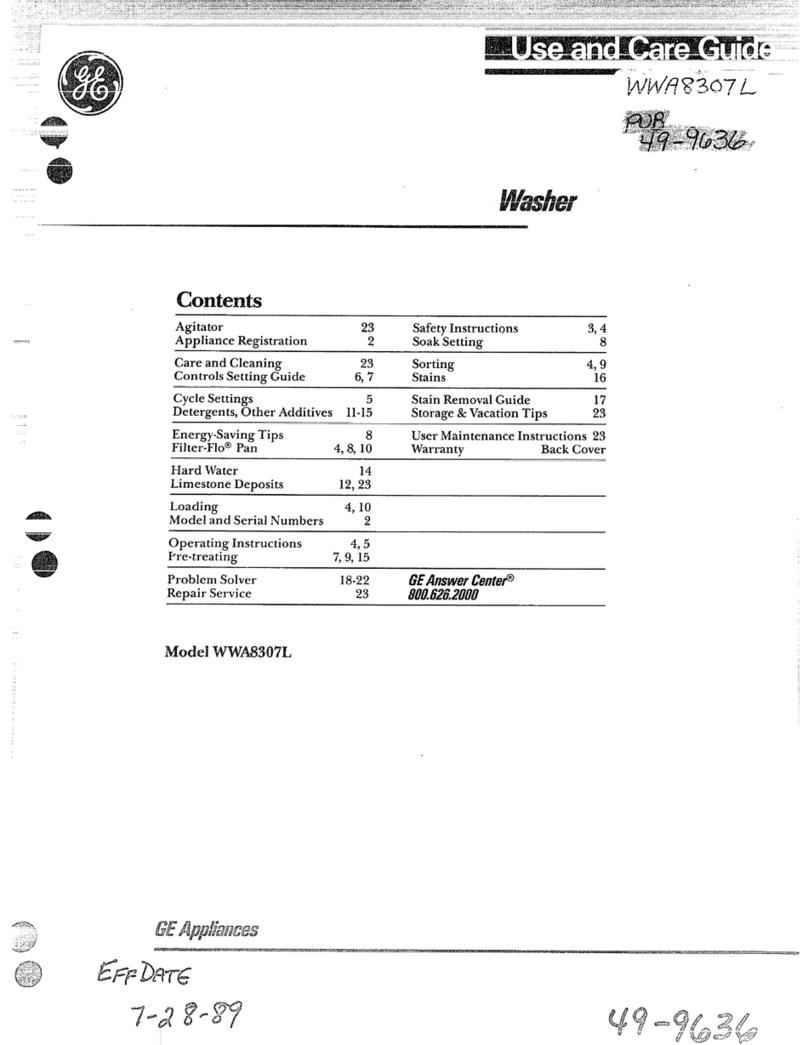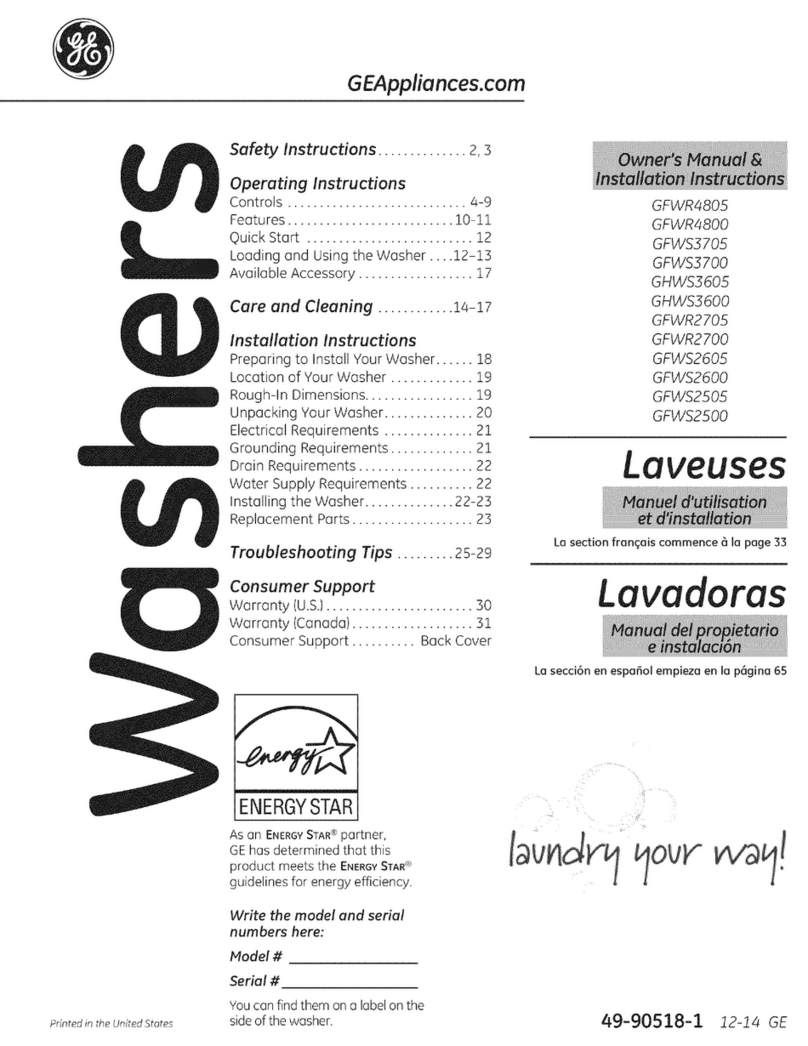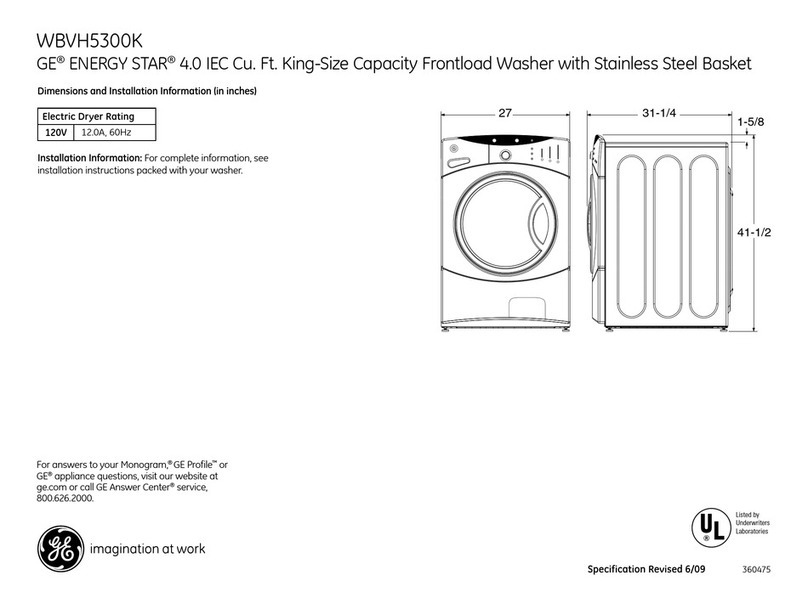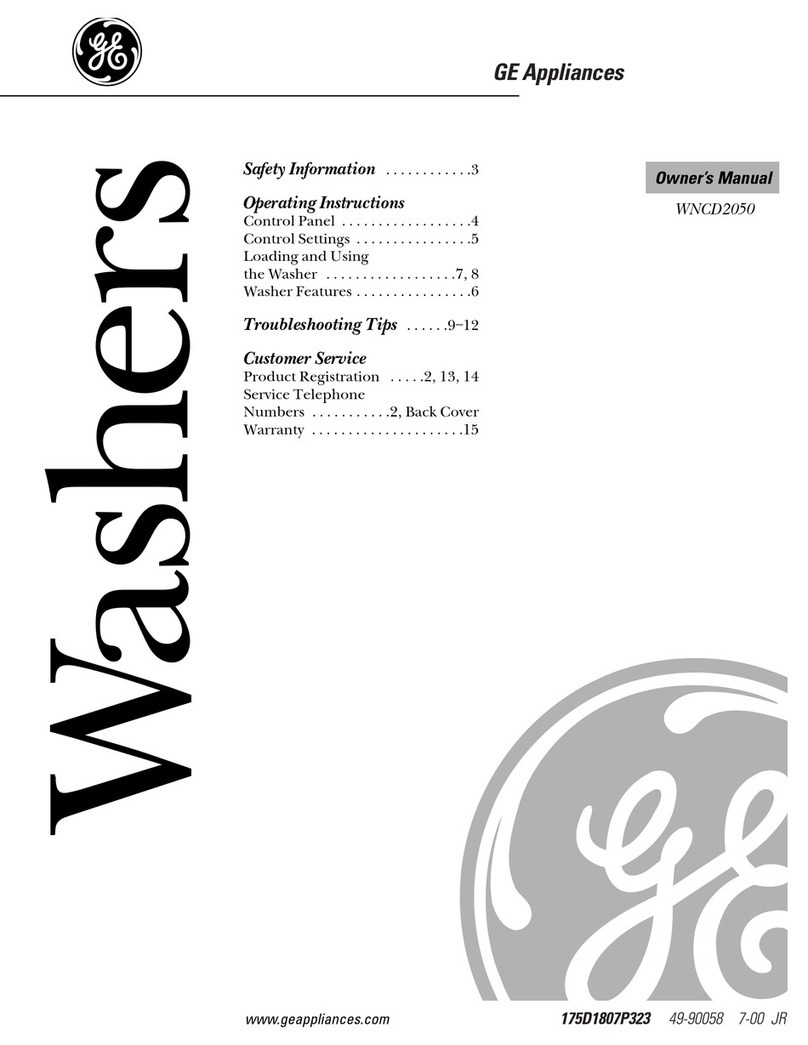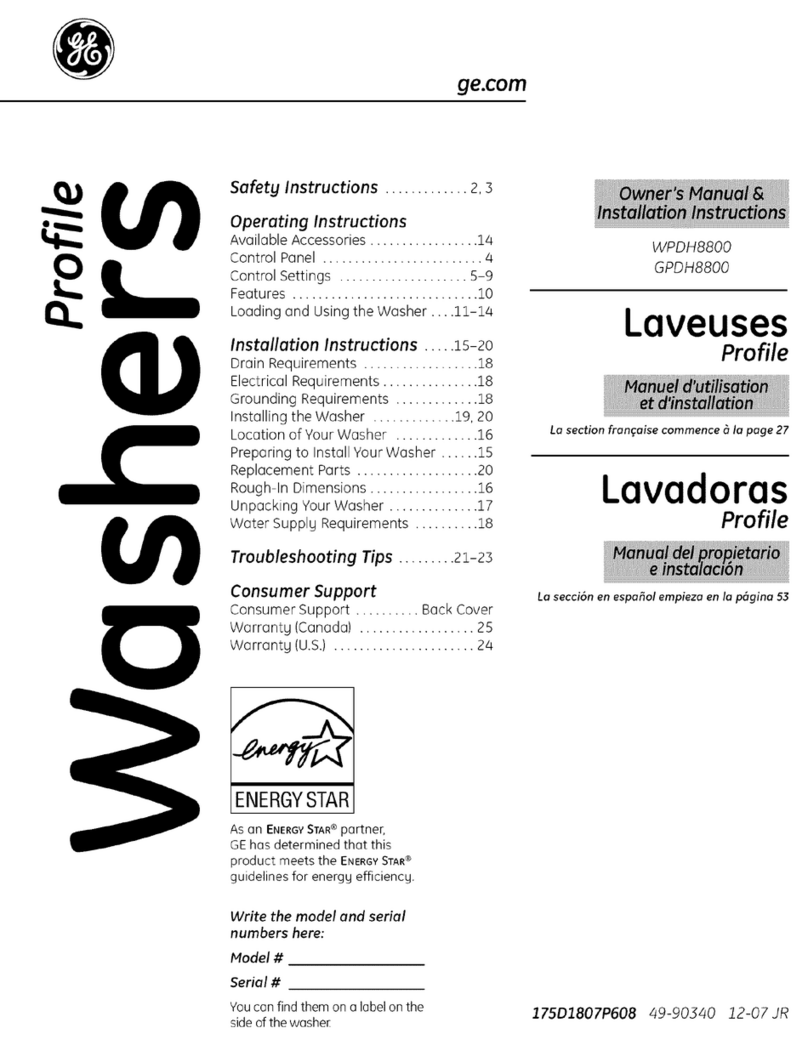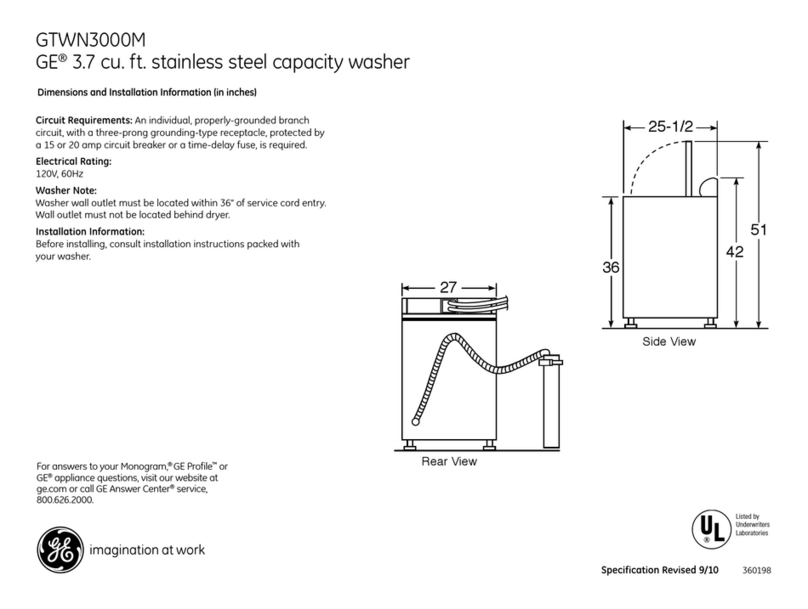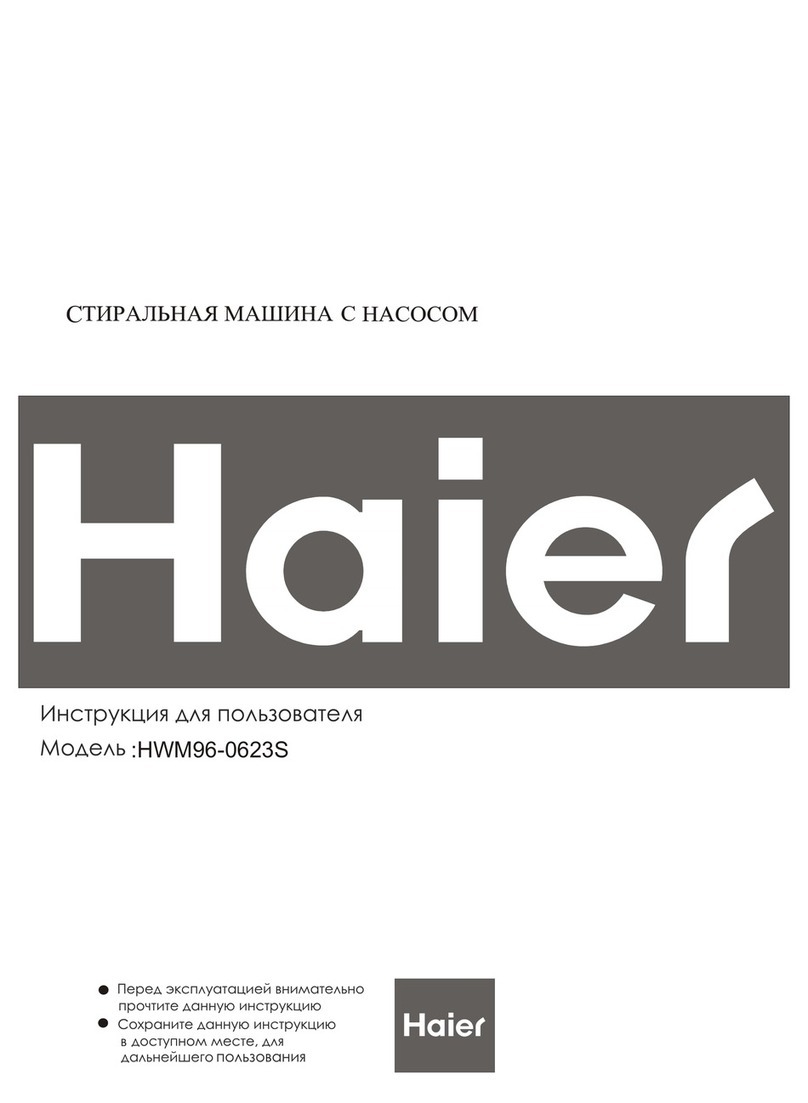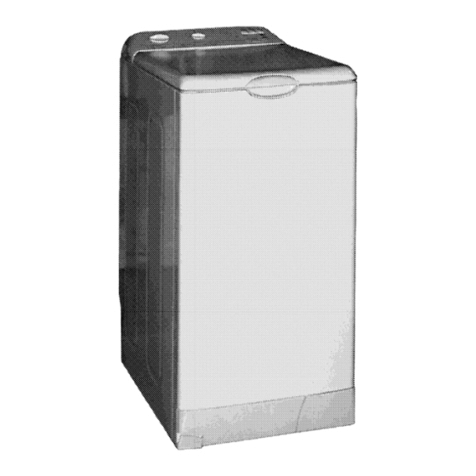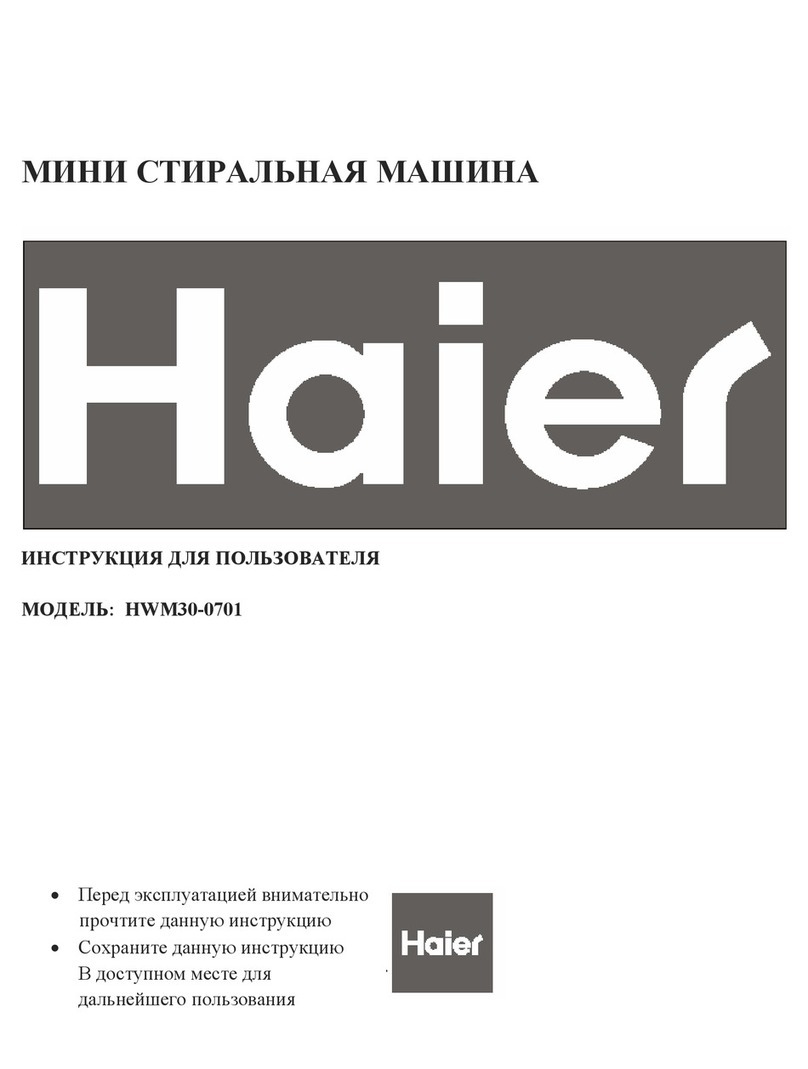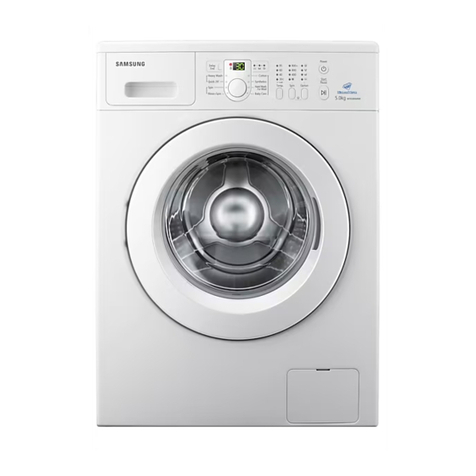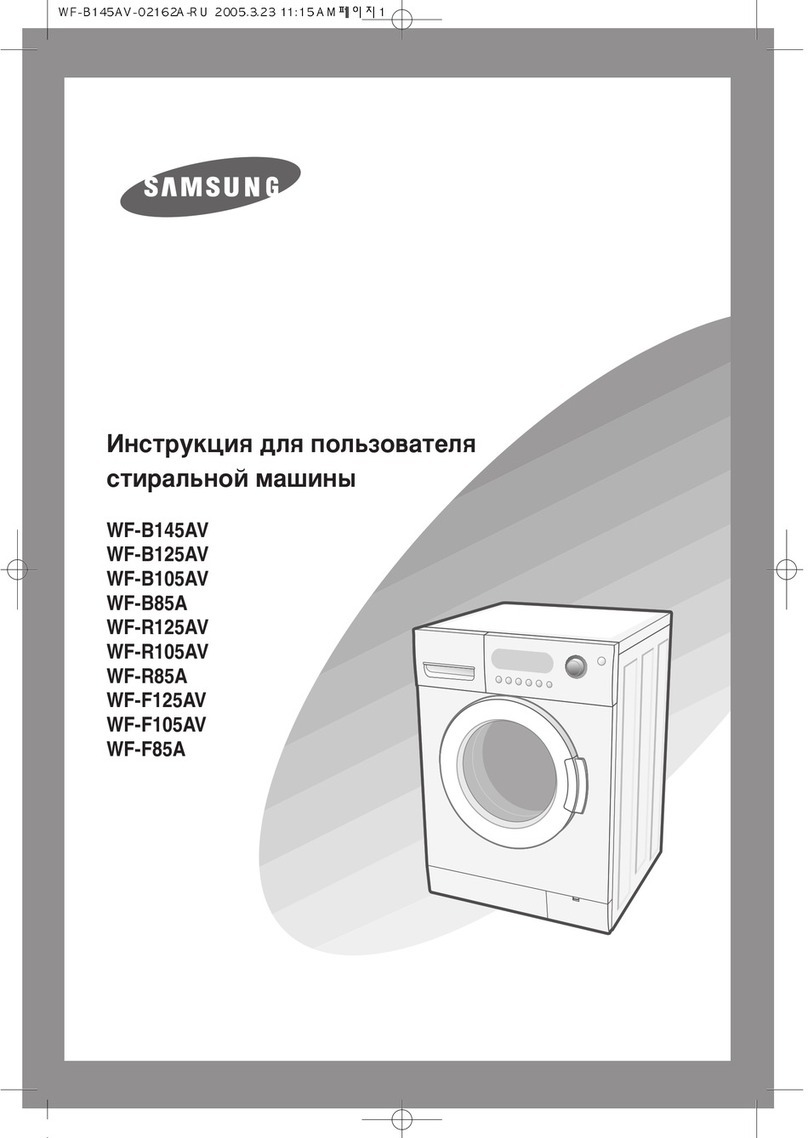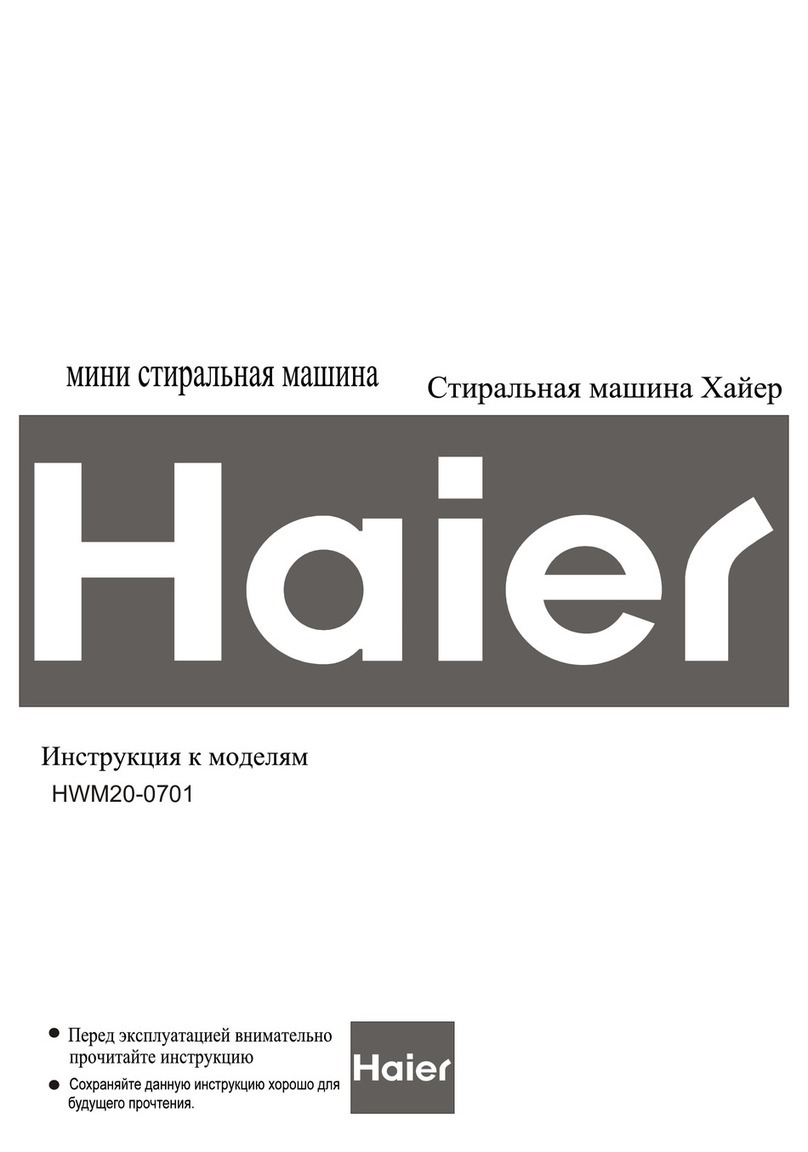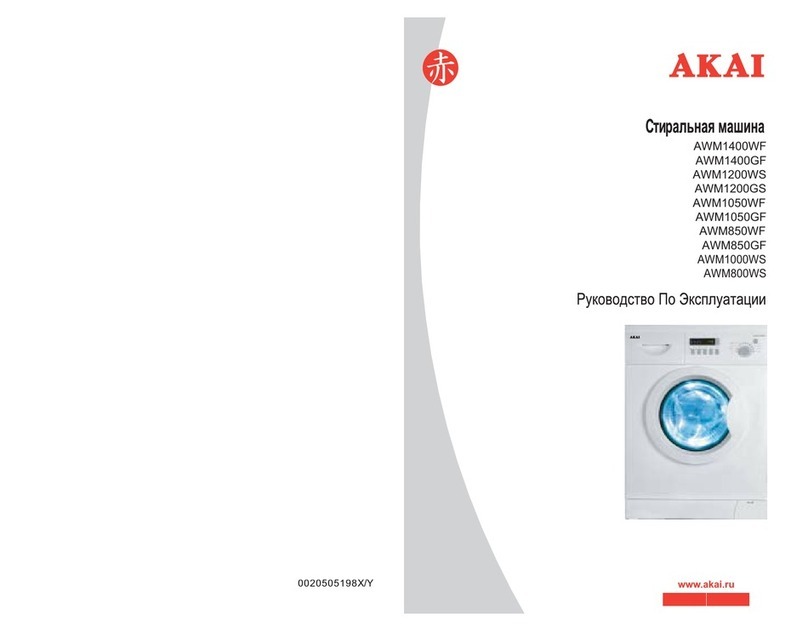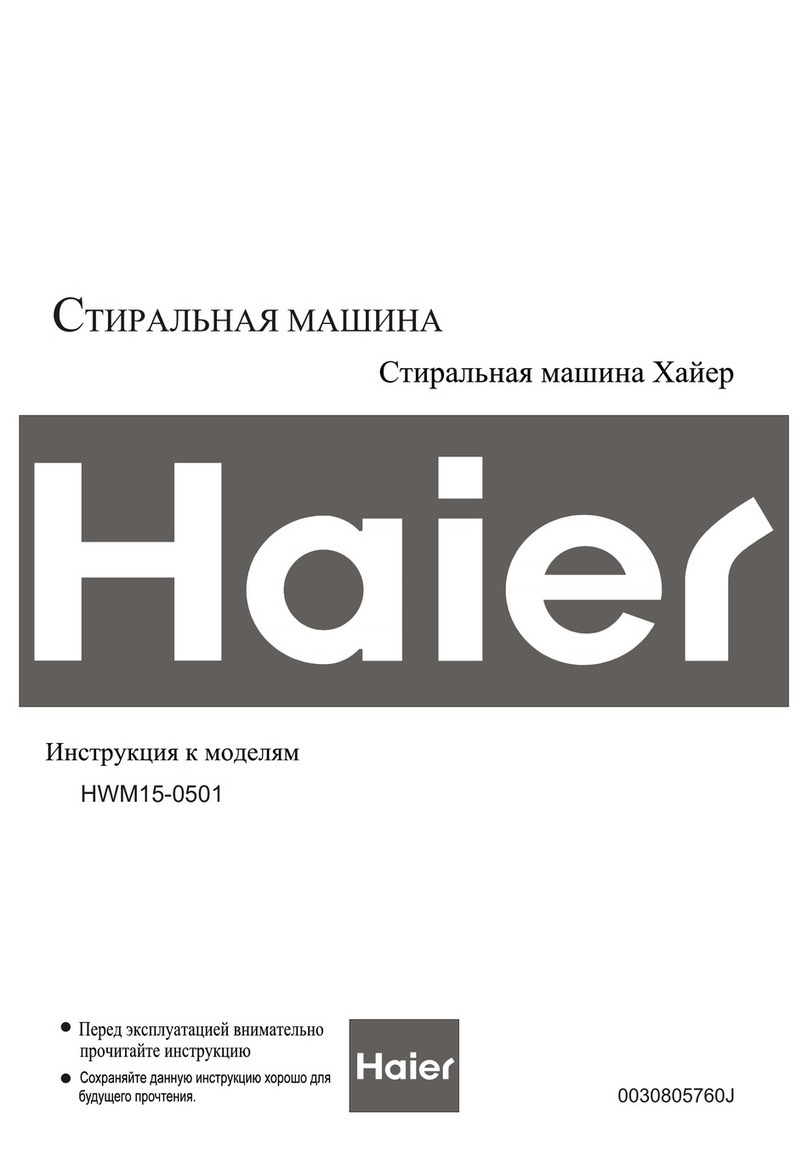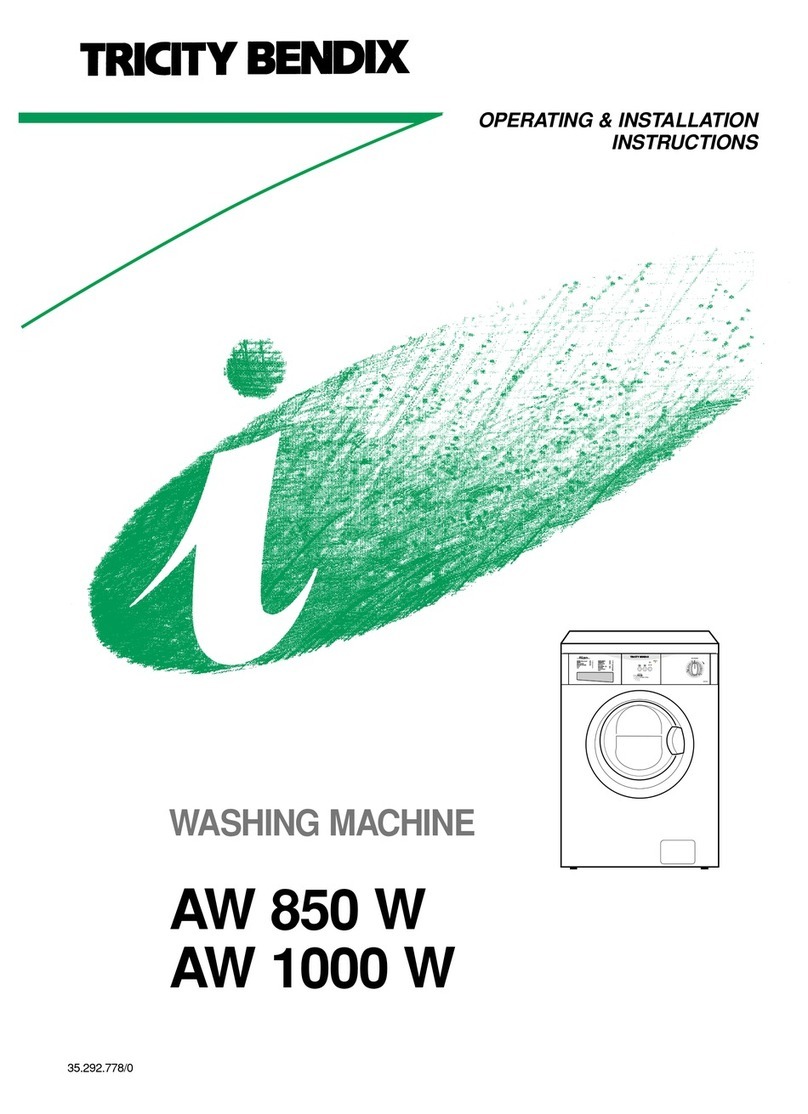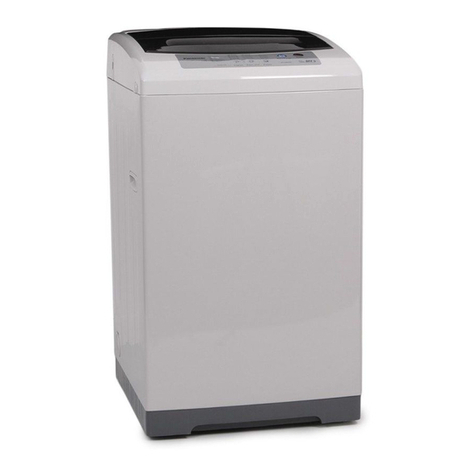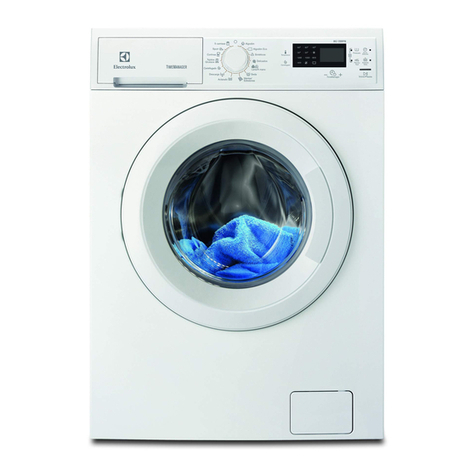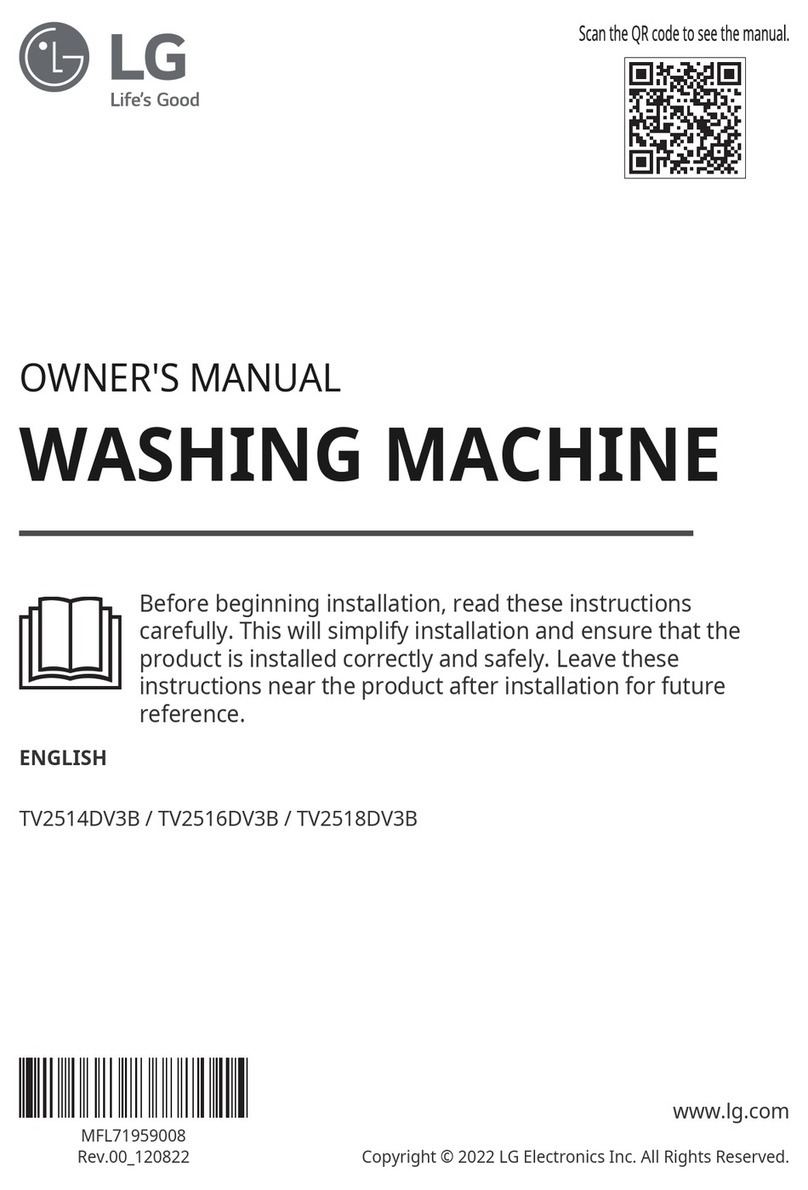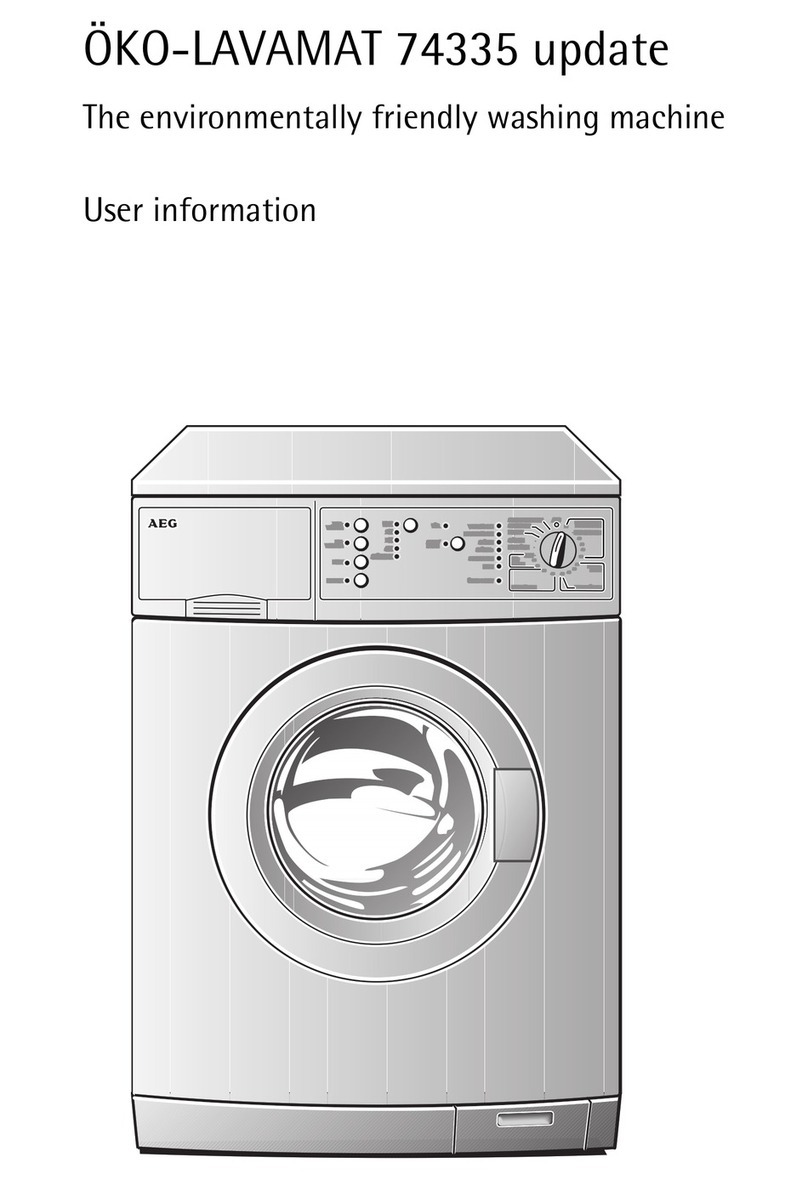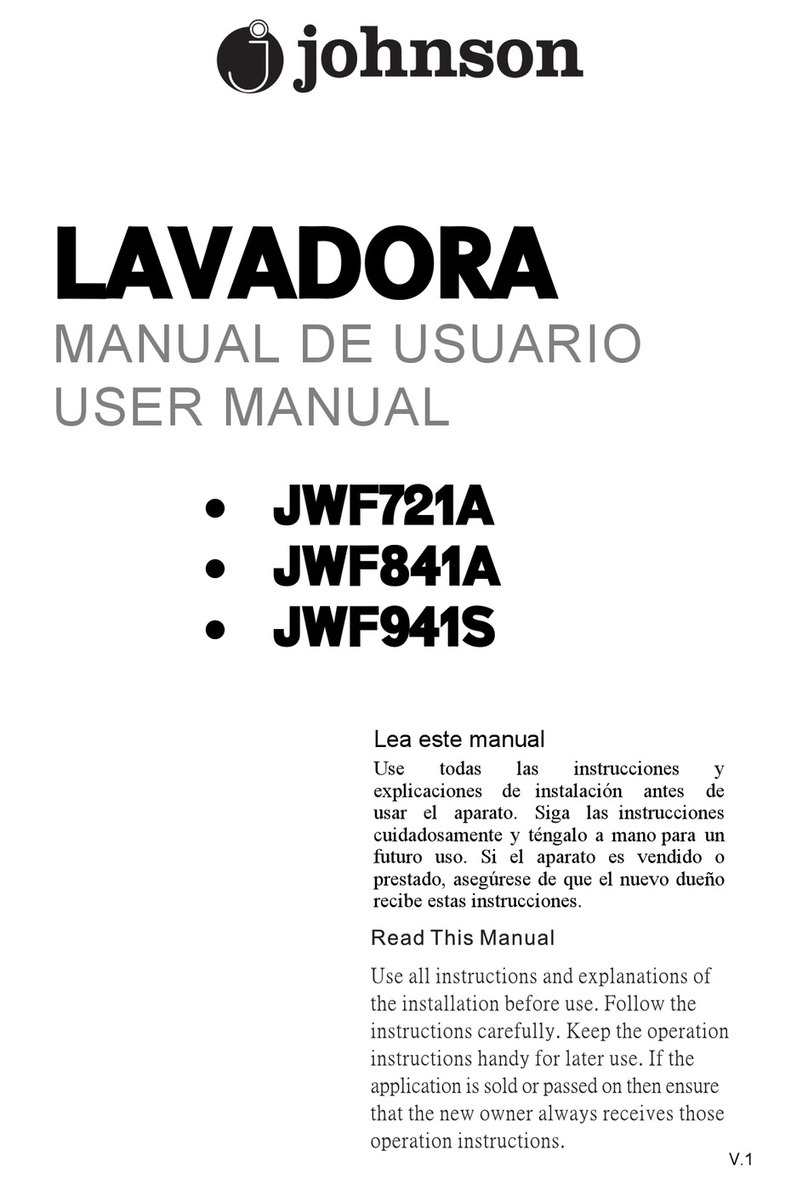
—
ImportantSafe@ Instructions–sAvETmtm INSTRUCTIONS
Read811
instructions beforeusing this appliance
WARNING—When usingthis
appliance,alwaysexercisebasic
safetyprecautions,includingthe
foHowing:
eusethis %q3pmmceonlyforits
intended purpose as describedin
thisUseand Care Book.
eThis washermustbe properly
insta!kdand locatedin
ficmrdancewiththeWtahtion
h’nm%lctimsbeforeit isused.
-Properlyground to conform
with.allgoverningcodes
and ordinances.
-Installor store whereit willnot
beexposedto temperatures
belowfreezingor exposedto
the weather.
-Connectto aproperlyrated,
protected and sizedpower-
supplycircuitto avoidelectrical
overload.
-Connectto adequateplumbing
and drain facilitiesas described
in the InstaJIationInstructions.
~Turn off water faucetswhenthe
wa;her isnot in useto relieve
pressureon hosesand valves,and
to minimizeleakageif ahoseor
valveshould break or rupture.
@When disconnectingthis
appliancepullby the plugrather
than the cord to avoiddamageto
thecord or junction of cord and
plug.Make surethat the cord is
locatedso that it willnot be
steppedon, tripped over or
otherwisesubjectedto damage
or stress.
~Westronglyrecommendthat
anyservicingbe performed by
aqualifiedindividual
@Thewiringdiagram for this
machineis Iocatedinsidethe
controlpanel.
To minimizem?.possibility
ofinjury:
@Do not mixchlorinebleachwith
ammoniaor acidssuchasvinegar
and/or rust remover.Mixingcan
produceatoxicgaswhichmay
causedeath.
@Do not washor dry articlesthat
havebeencleanedin, washedin,
soakedin, or spottedwith
combustibleor explosive
substances(suchasgasoline,
degreasers,dry-cleaningsolvents,
kerosene,etc.)whichmaygiveoff
vaporsthat couldigniteor
explode.
Do not add thesesubstancesto the
washwater.
Do not usethesesubstances
around your washerand/or dryer
duringoperation.
@HYDROGEN GAS isproduced
by the chemicalaction withinyour
water heaterand thegascan
accumulatein the water heater
and/or waterpipesif hot waterhas
not been usedfor aperiodof two
weeksor longer.HYDROGEN
GM CAN BEEXPLOSIVE
UNDER THESE CIRCLJM-
STANCES.So to preventthe
possibilityof damageor injury,if
you havenot usedhot water for
two weeksor more, or moveinto
aresidencein whichthe hot water
systemmay not havebeenused for
sometime, turn on allhot water
faucetsand allowthem to run for
severalminutesbefore usingany
electricalappliancewhichiscon-
nectedto the hot water system.
Thiswillallowany hydrogengas
to escape.Of course, sincethe gas
is flammable,do not smokeor use
an open flameor applianceduring
thisprocess.
@Neverreachinto thewasher
whileit ismoving.Beforeloading,
unloadingor addingclothes,push
in the CycleSelectorKnobto
“STOP” position,then wait until
the machinehas completely
stoppedbeforeopeningthe lid.
@Closesupervisionisnecessary
if thisapplianceisusedby or near
children.Do not allowchildrento
playinside,on, or withthisappli-
anceor anydiscardedappliance.
Disposeof discardedappliances
and shippingor packingmaterials
properly.Beforediscardinga
washeror removingfrom service,
removethe washerlid.
~Keepalllaundryaids(suchas
detergents,bleaches,fabricsof-
teners, etc.)out of thereach of
children,preferablyin alocked
cabinet.Observeallwarningson
containerlabelsto avoidpersonal
injury.
@Keepthe area around and under-
neath your appliancesfree from
the accumulationof combustible
materials,suchas lint,paper, rags,
chemicals,etc.
@Keepthe floor around your
appliancescleanand dry to reduce
the possibilityof slipping.
@Tominimizethe possibilityof
electricshock, unplugthisappli-
ancefrom the power-supplybefore
attemptinganymaintenanceor
cleaning(exceptthe removaland
cleaningof thelint filter).NOTE:
Turningthe CycleSelectorKnob to
an OFF positiondoes NOT dis-
connectthe appliancefrom the
power-supply.
3

